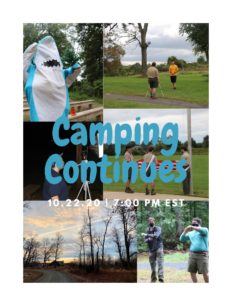
The National Capital Area Council presents to you Camping Continues—an all-new web-series promoting the outdoors, Scouting spirit, and some plain old fun. There is enough for everyone… from Lion Cub Scouts to the most experienced Eagle Scout! Join the crazy cast of Camping Continues for a fun-filled evening of games, skills, and thrills!
Tune in on Thursday, October 22, at 7:00 PM EST for the season premiere on the Council’s Facebook page… and grab an extra pair of Scout Socks because yours will be knocked off!


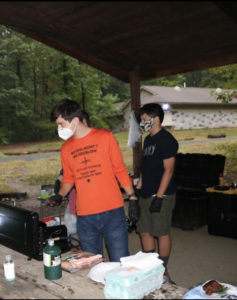

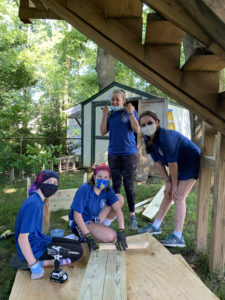 When I learned that Bailey’s Elementary School in Vienna, VA, needed some garden boxes, I was inspired to help. I’ve always liked the school as my mother works there, and I particularly enjoy the idea of garden boxes that would help kids learn more about nature. So I decided to reach out to the school and present my plan for my Eagle Scout Service Project.
When I learned that Bailey’s Elementary School in Vienna, VA, needed some garden boxes, I was inspired to help. I’ve always liked the school as my mother works there, and I particularly enjoy the idea of garden boxes that would help kids learn more about nature. So I decided to reach out to the school and present my plan for my Eagle Scout Service Project.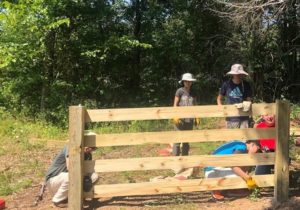 The task seemed daunting at first. Breaking the earth for my Eagle Scout project was no easy feat. I wanted to construct the front fence of the start of a new equestrian park for a local non-profit horse equine-assisted therapy organization. Driving out to the property, parking on the side of the road, I tried to peer in to see what I was working with. I shook my head in disbelief; from the road, I could not walk even ten feet into the property. It was overgrown, trees lining the front of the property, and bugs swarming my every step. How was I supposed to build a fence where I couldn’t even see the ground? However, I chose to help the organization; helping the therapy center made me feel meaning in my work, and the knowledge that less fortunate children could benefit from it only convinced me more to take this project on.
The task seemed daunting at first. Breaking the earth for my Eagle Scout project was no easy feat. I wanted to construct the front fence of the start of a new equestrian park for a local non-profit horse equine-assisted therapy organization. Driving out to the property, parking on the side of the road, I tried to peer in to see what I was working with. I shook my head in disbelief; from the road, I could not walk even ten feet into the property. It was overgrown, trees lining the front of the property, and bugs swarming my every step. How was I supposed to build a fence where I couldn’t even see the ground? However, I chose to help the organization; helping the therapy center made me feel meaning in my work, and the knowledge that less fortunate children could benefit from it only convinced me more to take this project on.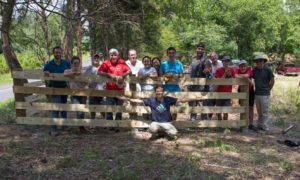 On the day of the project, after all the preparation, laying out the construction flags, measuring the fence distance, and renting equipment, I thought a fence cannot be that difficult to construct right? I was wrong. Off the bat, I faced even more obstacles. Drilling holes in the ground proved to be a pain in the ass, brittle, rocky earth testing my paper plan. After all the work I put in, I was not going to be stopped by a faulty power auger. My perfect plan was put to a halt in its tracks. As I pondered the possibility of working well into the night, it dawned on me that I should implement Plan B, one that just sprung into my mind. Keeping the workers focused and not idle became a new priority as the other parts of my old plan finished. I diverted my resources to help drill holes. Through the beating sun, we finally managed to finish the project after seven hours of hard labor, in front of me was a completed 300-foot fence. I would have never thought I would transform the wilderness into an orderly, pretty fence, a trailblazer for the equestrian park.
On the day of the project, after all the preparation, laying out the construction flags, measuring the fence distance, and renting equipment, I thought a fence cannot be that difficult to construct right? I was wrong. Off the bat, I faced even more obstacles. Drilling holes in the ground proved to be a pain in the ass, brittle, rocky earth testing my paper plan. After all the work I put in, I was not going to be stopped by a faulty power auger. My perfect plan was put to a halt in its tracks. As I pondered the possibility of working well into the night, it dawned on me that I should implement Plan B, one that just sprung into my mind. Keeping the workers focused and not idle became a new priority as the other parts of my old plan finished. I diverted my resources to help drill holes. Through the beating sun, we finally managed to finish the project after seven hours of hard labor, in front of me was a completed 300-foot fence. I would have never thought I would transform the wilderness into an orderly, pretty fence, a trailblazer for the equestrian park.